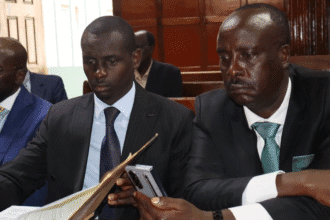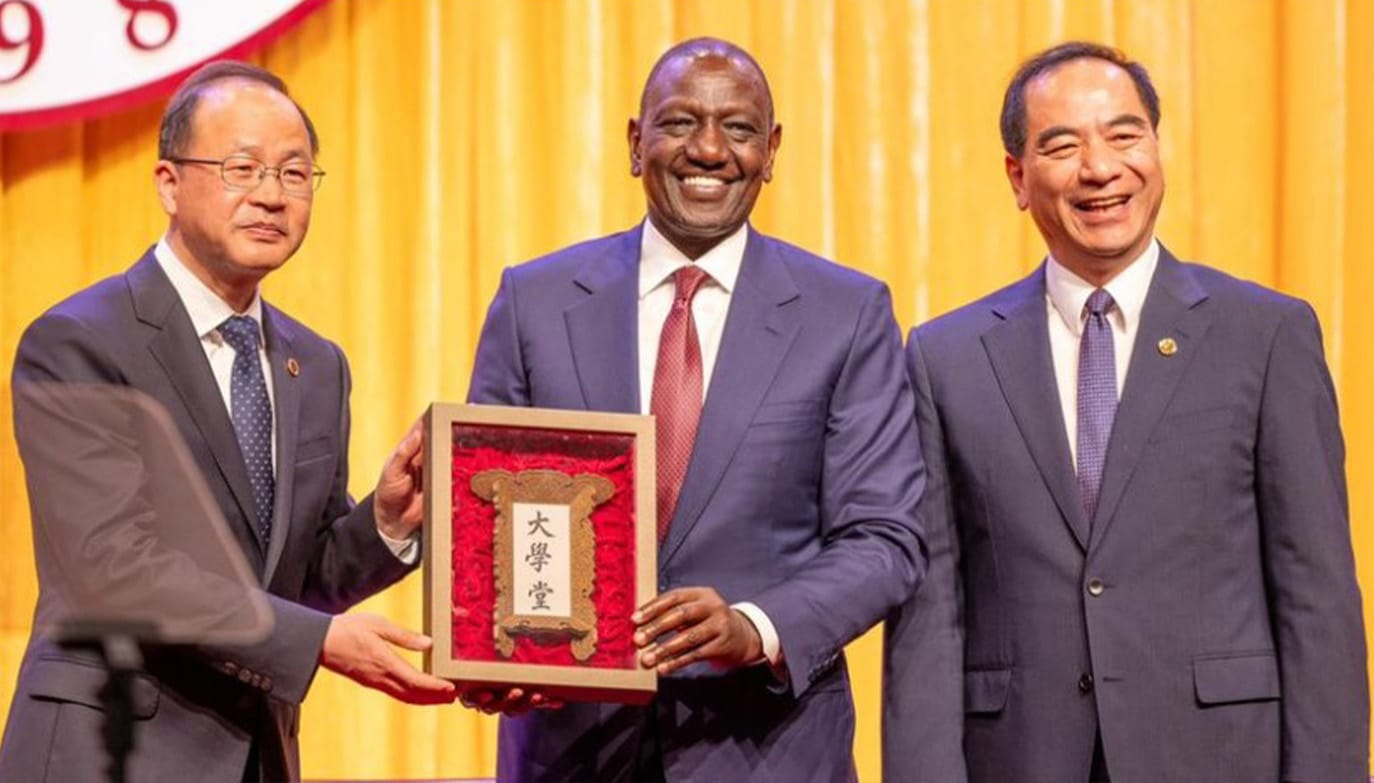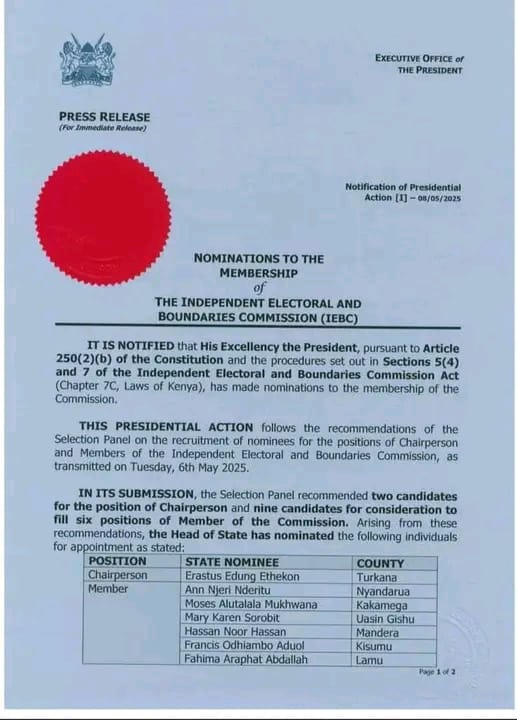Kenya, frequently described as the economic powerhouse of East Africa, finds itself in an increasingly complicated geopolitical panorama. With its developing economic system, strategic vicinity, and political influence, Kenya has come to be a key participant in the Horn of Africa. This positioning makes it a vast companion for both China and the United States, worldwide superpowers with contrasting interests and engagement techniques on the African continent.
China and the US have each made tremendous inroads in Africa over the past many years; however, their processes are hugely distinctive. While China gives large infrastructure investments with few political strings connected, the U.S. focuses more on governance, safety, and improvement partnerships. Kenya, being a beneficiary of each relationship, needs to tread a delicate direction—balancing its financial wishes with diplomatic tact.
The stakes are excessive. China is Kenya’s biggest buying and selling partner and a key investor in mega infrastructure projects, whereas the United States remains a critical partner in areas like safety, governance, and trade. Kenya’s strategic dance between those giants displays not only the most effective choice for diversified improvement but also a pursuit of sovereignty and strategic autonomy. In this text, we explore how Kenya manages this diplomatic balancing act, what it profits from each associate, and the capability risks it has faced and worries about.
To fully understand Kenya’s contemporary foreign coverage selections, it’s critical to recollect its ancient context. Kenya’s worldwide engagements have developed over centuries—from alternate routes on the Swahili coast with Arabs and Asians, to European colonialism, and finally, to trendy-day international relations.
In the post-independence generation, Kenya maintained an exceptionally seasoned Western orientation, aligning itself with capitalist economies and liberal democracies. Its partnership with the US was constructed on shared interests in safety, change, and education. The Cold War period saw Kenya leaning greater in the direction of the West, distancing itself from the Soviet bloc.
However, as the worldwide stability of strength shifted within the twenty-first century, China emerged as a prime global participant. By the early 2000s, Kenya started out embracing Chinese investment and change opportunities, in particular as Western donors imposed stricter governance conditions. China offered what many African leaders described as a “no-strings-attached” partnership, which appealed to nations seeking fast improvement without foreign interference in internal affairs.
Despite their ideological variations, Kenya has managed to preserve the members of the family in each international location. This non-aligned approach allows Kenya to take advantage of both financial and diplomatic ties without being drawn into the strategic contention between Beijing and Washington.
This strategic ambivalence isn’t always unintended—it’s rooted in Kenya’s long-time vision of playing a relevant role in African diplomacy while maintaining coverage independence. As we’ll see inside the subsequent sections, this history has laid the basis for the complex, once in a while contradictory, relationships Kenya now has with each power.
When you reflect on reconsideration of China’s presence in Kenya, it’s no longer impossible to mention infrastructure. From the enduring Standard Gauge Railway (SGR) connecting Nairobi and Mombasa to towering highways and smart towns, China’s footprint in Kenya is concrete. Through the Belt and Road Initiative (BRI), China has injected billions into Kenya’s infrastructure, aiming to show the U.S. the right way into a logistics and change hub for East Africa.
Chinese investments are largely focused on construction, electricity, and transport. The SGR, built by me, is priced at over $3.6 billion, financed through Chinese loans and constructed through Chinese corporations. Beyond that, Chinese corporations have built roads, bridges, power vegetation, and even whole town projects like Konza Technopolis, a deliberately clever city.
Trade between the two nations has grown substantially. China is Kenya’s top import source, offering everything from electronics to equipment. However, the change relationship is imbalanced—Kenya imports far more than it exports, leading to a chronic trade deficit.
One of the most debatable components of China’s financial involvement is the rising debt. As of recent reviews, an enormous portion of Kenya’s external debt is owed to Chinese establishments. Critics warn that this could result in a “debt entice”, where defaulting should pressure Kenya to cede control over strategic assets. China denies this, stating that its loans are meant to assist companion countries to expand sustainably.
Despite these challenges, many Kenyan policymakers continue to view China as a necessary accomplice for national improvement. The pace, scale, and efficiency of Chinese investments—although now and again lacking transparency—have introduced tangible advantages that Western partners are often slower to provide.
Unlike China’s infrastructure-heavy investments, the US engages Kenya more via governance, innovation, and human development. The U.S. is considered one of Kenya’s largest donors in health, training, and democratic governance, with billions invested over the last few decades.
The African Growth and Opportunity Act (AGOA) has been a cornerstone of U.S.-Kenya relations for family members. It offers Kenyan exporters duty-unfastened get right of entry to the American marketplace, particularly for clothing, agricultural items, and handicrafts. Thousands of jobs were created in export processing zones, boosting Kenya’s manufacturing sector.
In recent years, the U.S. has additionally extended its investment in Kenya’s generation and electricity sectors. American tech giants like Microsoft, Google, and IBM have a developing presence in Nairobi’s Silicon Savannah. These groups now offer not just jobs but also education packages, entrepreneurship aid, and study projects.
The United States additionally helps Kenya’s renewable power transition through applications like Power Africa, which aims to increase access to dependable power. Unlike China’s emphasis on tough infrastructure, the U.S. takes a greater people-targeted approach, prioritising sustainability, transparency, and community involvement.
Yet, Kenya’s relationship with the U.S. isn’t without friction. American resources often come with situations associated with governance, human rights, and anti-corruption efforts. While those are essential, they can sometimes slow down funding or create political anxiety. Still, many in Kenya respect the long-term improvement dreams embedded in U.S. help, seeing them as a supplement to Chinese infrastructure.
At the heart of Kenya’s engagement with China and the U.S. lies its diplomatic strategy of balance. Kenya has made it clear that it doesn’t want to select facets—it prefers to paint with all inclined partners while retaining its sovereignty. This balancing act isn’t just about keeping off battle; it’s a calculated attempt to extract the most blessings from each courting.
Kenyan leaders have time and again emphasised their non-aligned stance. They have interaction with the U.S. on issues of governance and security whilst turning to China for infrastructure and exchange. The purpose is to diversify partnerships, lessen overreliance on any single United States of America, and ensure that countrywide pursuits continue to be in the middle.
This diplomatic juggling isn’t clean. Kenya has to constantly navigate the competing interests of its worldwide companions. For example, its assistance for Taiwan should anger China, at the same time as leaning too long a way into Chinese offers might disenchant the U.S., especially if transparency and human rights issues arise.
But Kenya has become adept at handling those pressures. It leverages its position as a local anchor nation and a gateway to East Africa to preserve robust ties with each power. This approach not only protects its diplomatic autonomy but also positions Kenya as a frontrunner in shaping Africa’s collective foreign coverage voice.









